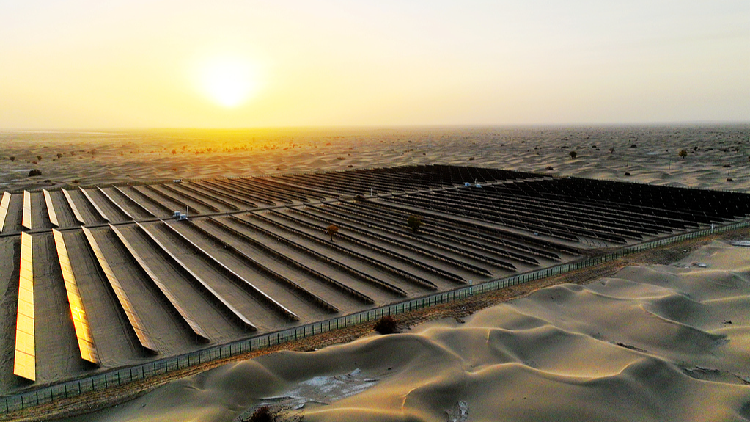Cutting-Edge Strategies to Fight Desertification in Xinjiang
A pioneering project focused on "solar power and agriculture" is transforming the southern fringe of the Taklimakan Desert in Hotan, located in the Xinjiang Uygur Autonomous Region. This innovative initiative is utilizing solar panels throughout the expansive region, merging renewable energy with agricultural practices to revitalize the arid landscape. Following close to 200 days of construction, the desert is experiencing a significant transformation.

One of the most notable immediate effects is the reduction in wind speed. Previously, the lack of vegetation in this area led to intense sandstorms lasting five to six months each spring and summer. However, the large-scale solar power plants are helping to address this issue. Acting as wind barriers, the solar panels significantly diminish wind speed, which limits the movement of sand and lessens the impact of sandstorms on surrounding communities.
Alongside the reduction in wind speed, the project is also focused on stabilizing sandy soil and preventing erosion. The incorporation of agricultural practices ensures that plant root systems will help anchor the soil effectively.
Situated about 4.5 meters tall, the photovoltaic panels are supported by concrete foundation piles that extend approximately 1.5 meters underground. Each panel is set at a 33-degree tilt. From the initial design stage, space for agricultural planting was thoughtfully included, with ample gaps between panel arrays and adequate room beneath each panel to allow for crop growth.
Agricultural experts have carried out trial plantings of over ten types of crops on the levelled desert terrain. Following evaluations of water usage and economic prospects, they found alfalfa— a fodder crop beneficial for cattle and sheep— to be the most appropriate choice. Large-scale alfalfa planting is planned to take place under the photovoltaic panels next spring.
This project has effectively woven together power generation, enhanced agricultural output, and efforts to combat desertification. As the management of desertification in the Taklimakan Desert progresses, the "solar power and agriculture" model is likely to find broader application across additional regions.
Anna Muller for TROIB News
Discover more Science and Technology news updates in TROIB Sci-Tech












